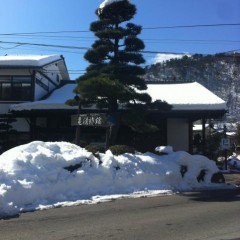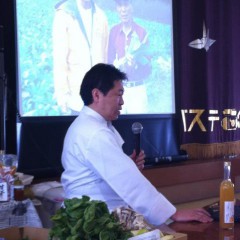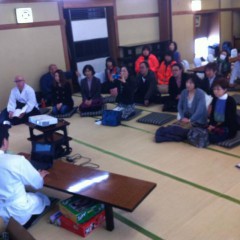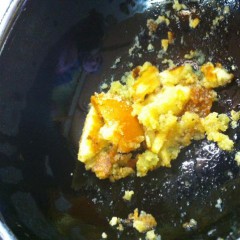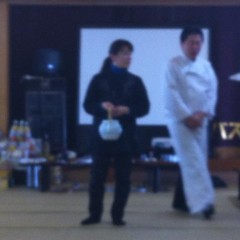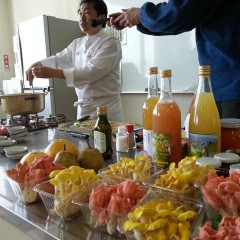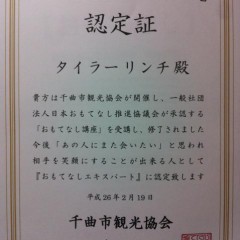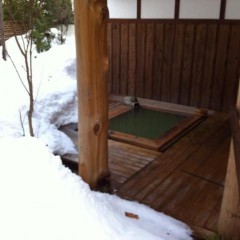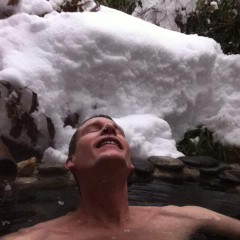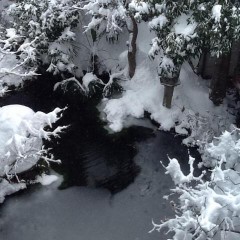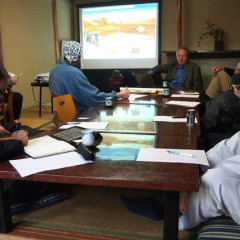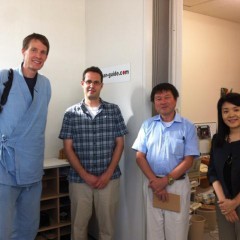米国大手旅行会社「リック・スティーブス・ヨロッパ・スルー・ザ・バック・ドア」のIT担当、B.バーディックさんは経済産業省「クールジャパン」の事業で戸倉上山田温泉の亀清旅館でIT関係の講演会を行われました。
その内容のサマリーです。
リック・スティーブス社はヨロッパの観光地を紹介する大手旅行会社。ガイドブックもエスコートツアーもやっています。テーマは「表面」より深いふれ合い。
テレビ番組も作っている。その番組を含めた動画はネットで大人気。尚且つ、ツアー参加者の声。
定期的に旅行セミナーも開いていて、ネットで生放送で発信している。Clear Channelのケーブルラジオにも番組を発信している。
観光地のスマホ用のアプリも出している。マップや見どころの案内に、電子本のリンク(有料、1~2千円)
Twitterでイベントやツアー、Rickさんの動きの情報を発信する。
FBでさまざまの動きも発信する。
写真: 目を引かれる魅力的な内容は重要。
その写真をFBと公式HPとブログで利用する。
尚且つ、Tumblr(写真形式ブログ)とPinterestにも。
旅行者から募集すること (Scrapbook)
電子メールマーケティング
3万人に週3回出している。
事務所の地域のメールアドレスに旅行セミナーの告知、
”Freebies"(特典)は大人気。
温泉について、
その温泉のストーリーが重要。歴史、現代の日本文化・生活の中の役割、効果、マナー、湯質
Wellness Travel(パワースポットやスピリチュアル観光)が人気
動画でVimeoやTumblrで広がる。「温泉タウン」のテーマでspa, hotspring, mineral bath, healing springsの検索言葉
As part of Onsen Town Togura-Kamiyamada's "Cool Japan" series of lectures, we had Mr. Brooke Burdick, the IT chief at Rick Steves' Europe Through the Back Door, come and give a lecture. Following is a summary of the main points:
First of all, Rick Steves' is the leading travel agent / travel guide producer for travel to Western Europe. They specialize in getting behind the touristy surface and letting people become "temporary locals".
Rick Steves' also produces TV and radio programs for PBS, and those shows along with the short videos they present are among the most-viewed travel videos on You Tube.
Besides videos, another effective sales tool is to use customer testimonials.
Rick Steves' presents travel seminars at their Edmonds location on a regular basis, and they livestream them on the internet. These and other radio programs are also run on Clear Channel cable radio.
They also make smart phone travel guide apps for various destinations in Europe. Apps include maps, info on sights to see, and links to purchase the e-book version of the guide books (typically $10-$20).
They use Twitter for publicity for their events and tours and to update Rick's fans as to his whereabouts.
They use Facebook to update people on all general news.
Good pictures are key. They need to concisely convey the main attraction of a particular sightseeing place or event, in an attention-grabbing way.
They use the effective pictures on Facebook, their official website and blog, as well as on Tumblr (a picture-based blog) and Pinterest (picture-based social media).
They make use of credit-free pictures as well as photos submitted by customers to the Rick Steves' scrapbook.
They also make ample use of e-mail marketing. Besides thrice-weekly e-mailings to their 30,000+ mailing list, they also send out e-mails once a week to local addresses about upcoming travel seminars at their office.
For their tours and accommodation reservations, they find Freebies are hugely popular.
Regarding "Onsen", Brooke-san suggests fully developing the onsen story -- the history, their place in today's Japanese culture and lifestyle, the health benefits, the bathing 'rules', the various onsen waters. The story needs to be complete with mystery, culture and ... food!
According to Brooke-san, Wellness Travel is becoming increasingly popular. Overseas travel can be a spiritual experience, opening up your eyes to an entirely new world view. Touching on spiritual places or events can be highly rewarding for the travellers.
For promoting videos, he suggests using Vimeo and Tumblr. Key words could be
spa, hotspring, mineral bath, healing springs
